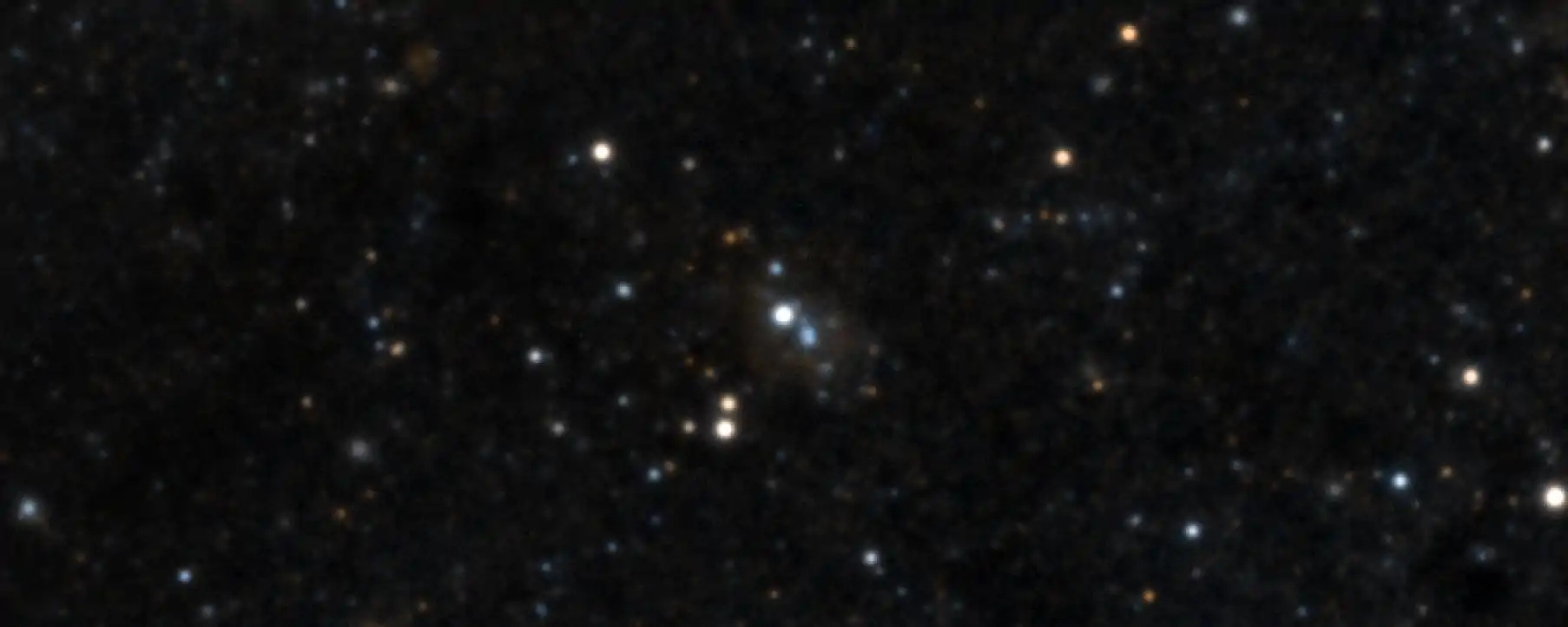M33-013406.63
M33-013406.63, also known as B416,[4] is a blue supergiant star in the constellation of Triangulum. It is located within the Triangulum Galaxy, which is approximately 2,380,000–3,070,000 light years away from Earth.
Credit: NASA/UH-IfA | |
| Observation data Epoch J2000.0 Equinox J2000.0 | |
|---|---|
| Constellation | Triangulum |
| Right ascension | 01h 34m 06.63s[1] |
| Declination | +30° 41′ 37.60″[1] |
| Apparent magnitude (V) | 16.1[2] |
| Characteristics | |
| Evolutionary stage | Late O supergiant or candidate LBV[3] |
| Spectral type | O[3] |
| Variable type | cLBV[3] |
| Astrometry | |
| Absolute magnitude (MV) | –9.1 – –9.6[3] |
| Absolute bolometric magnitude (Mbol) | –12.2 – –12.7[3] |
| Details[2] | |
| A | |
| Radius | 80[lower-alpha 1] R☉ |
| Luminosity | 4.68×106 L☉ |
| Temperature | ~30,000 K |
| Rotational velocity (v sin i) | 75±5 km/s |
| B | |
| Radius | 210[lower-alpha 2] R☉ |
| Luminosity | 407,380 L☉ |
| Temperature | 10,000 K |
| Other designations | |
LGGS J013406.63+304147.8, B416 | |
| Database references | |
| SIMBAD | data |
It is potentially one of the most luminous stars ever discovered, estimated to be approximately between 3 and 10 million times more luminous than the Sun, although it is thought likely to be a multiple star system.[3] Modelling of the spectrum based on some assumptions about the relative sizes of the two stars suggests a secondary around half a million times as luminous as the Sun and the primary over four million times as luminous as the Sun.[2]
Notes
- Applying the Stefan-Boltzmann Law with a nominal solar effective temperature of 5,772 K:
- Applying the Stefan-Boltzmann Law with a nominal solar effective temperature of 5,772 K:
References
- Van Leeuwen, F. (2007). "Validation of the new Hipparcos reduction". Astronomy and Astrophysics. 474 (2): 653–664. arXiv:0708.1752. Bibcode:2007A&A...474..653V. doi:10.1051/0004-6361:20078357. S2CID 18759600.
- Kourniotis, M.; Kraus, M.; Arias, M. L.; Cidale, L.; Torres, A. F. (2018). "On the evolutionary state of massive stars in transition phases in M33". Monthly Notices of the Royal Astronomical Society. 480 (3): 3706. arXiv:1808.00008. Bibcode:2018MNRAS.480.3706K. doi:10.1093/mnras/sty2087.
- Humphreys, Roberta M.; Weis, Kerstin; Davidson, Kris; Bomans, D. J.; Burggraf, Birgitta (2014). "Luminous and Variable Stars in M31 and M33. II. Luminous Blue Variables, Candidate LBVs, Fe II Emission Line Stars, and Other Supergiants". The Astrophysical Journal. 790 (1): 48. arXiv:1407.2259. Bibcode:2014ApJ...790...48H. doi:10.1088/0004-637X/790/1/48. S2CID 119177378.
- Humphreys, R. M.; Sandage, A. (November 1980). "On the stellar content and structure of the spiral Galaxy M33". The Astrophysical Journal Supplement Series. 44: 319. Bibcode:1980ApJS...44..319H. doi:10.1086/190696. ISSN 0067-0049.
This article is issued from Wikipedia. The text is licensed under Creative Commons - Attribution - Sharealike. Additional terms may apply for the media files.
